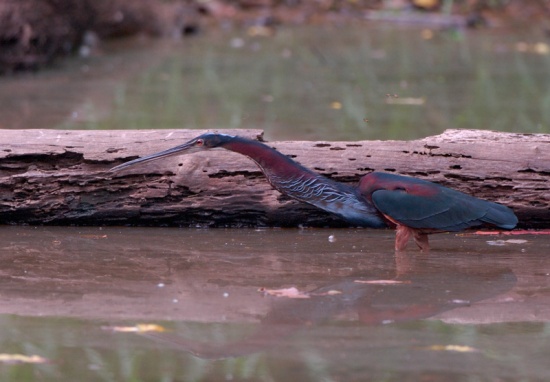(Add External Link) |
|||
| Line 31: | Line 31: | ||
Stalk their fish prey in shaded shallow water, often standing still or moving very slowly. They rarely wade in open water. | Stalk their fish prey in shaded shallow water, often standing still or moving very slowly. They rarely wade in open water. | ||
==External Links== | ==External Links== | ||
| − | *[http://www.arthurgrosset.com/sabirds/ | + | *[http://www.arthurgrosset.com/sabirds/agami%20heron.html Arthur Grosset's Birds] |
{{GSearch|Agamia+agami}} | {{GSearch|Agamia+agami}} | ||
[[Category:Birds]][[Category:Agamia]] | [[Category:Birds]][[Category:Agamia]] | ||
Revision as of 18:53, 26 July 2009
Alternative name: Chestnut-bellied Heron
- Agamia agami
Identification
L. 66-76cm
- A medium-sized heron
- Short-legged
- Very long, thin bill
- Chestnut neck and underparts
- White line down the center of the foreneck
- Green wings
- Pale blue plumes on head, sides of foreneck, and lower back
- Dull yellow legs, bill and facial skin
A beautiful and unmistakable bird, the sexes are similar
Immature
- Largely brown upperparts
- White foreneck
- Streaked brown and white underparts
Distribution
It is a resident breeding bird from Central America south to Peru and Brazil.
Taxonomy
It is the only member of the genus Agamia.
Habitat
The Agami Heron's habitat is forest swamps and similar wooded wetlands.
Despite its stunning plumage, this reclusive species' preference for shade and overhanging vegetation means that it is rarely seen at its best.
Behaviour
Breeding
They nest in colonies on platforms of sticks in trees over water which may gather more than 100 nests (Fleck 2003). The normal clutch is two blue eggs.
This is a quiet bird, but pairs and family groups may make various snoring or rattling sounds.
Diet
Stalk their fish prey in shaded shallow water, often standing still or moving very slowly. They rarely wade in open water.




